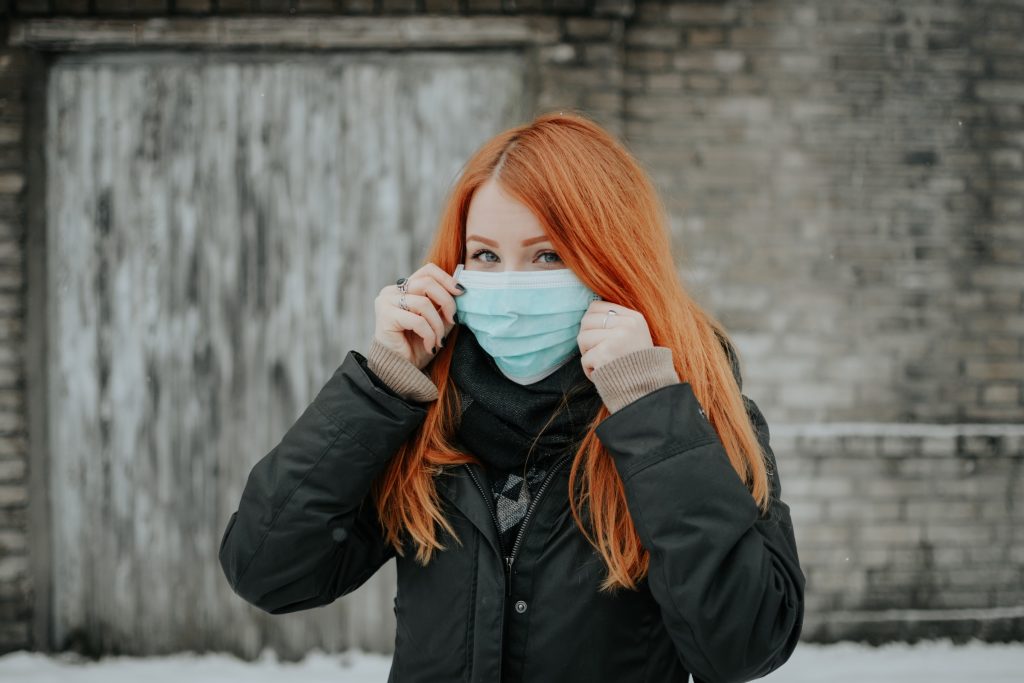The Estonian Health Board is finally recommending wearing a mask in crowded indoor spaces, while shopping or using a public transport, especially in the capital, Tallinn, and in Ida-Viru county.
“The coming weeks are critical in getting the virus under control,” the Health Board said. “Wearing a mask isn’t mandatory in Estonia, but a mask is a very good additional measure to keeping distance, good hand hygiene and good respiratory hygiene. Mask must be worn by everyone with whatever illness symptoms in public spaces or in a case of inevitable close contact.”
The Health Board adds that everyone who has come into contact with a coronavirus patient should wear a mask, even if they don’t have the symptoms.
“Masks should be worn while visiting crowded indoor spaces – stores, shopping centres, public transit etc. It’s highly recommended to wear a mask in regions with new infection pockets. Masks should be worn also outdoors when in crowded places where you can’t keep your distance from strangers.”
The new coronavirus pockets have appeared mainly in Harju and Ida-Viru counties, according to the Health Board. Harju County is where the capital, Tallinn, is located.
“In Harju County, of the 43 cases (33 of them in Tallinn), three have been infections within a family and three within a workplace. One case is connected with the East Tallinn Central Hospital and one case has unknown origins,” according to the Health Board.
The Health Board also points out that it’s necessary to put the mask on and wear it properly and to disinfect your hands after removing it.
All travel should be cancelled
“It’s essential that we take advantage of all options that help us stop the further spread of the virus. COVID-19 is reaching vital services and risk groups (hospitals and nursing homes). Taking into the account the spread of the virus in the world and in Europe, all travel abroad should be cancelled and the school break should be spent in Estonia. Everyone’s behaviour is the key to avoiding larger restrictions and to continue our regular lives.”
The Estonian Health Board describes a close contact as “people spending over 15 minutes at a distance of less than two metres (6.5 feet) from each other”. Thus going to meet people while sick is a surefire way to infect one’s friends – as people spend hours in an indoor space and speak in a loud volume. This helps the particles of the virus spread even better.
Almost 2,700 people are under surveillance by the Health Board’s northern regional department, 377 of them have contracted the virus. Altogether nine pockets have been identified in the northern region, of which the largest is the East Tallinn Central Hospital pocket where 26 employees, 15 patients and two café workers have been infected with the novel coronavirus.
At the Läänemere High School, 26 students and 10 teachers have been infected, according to the Health Board. At a workplace pocket, 23 people have been infected with the virus; eight people were infected at the Haapsalu Nostalgia Days; seven people at the Rescue Board; seven at another workplace pocket; and six at a family pocket.
In Ida-Viru County, the Health Board has registered ten active pockets. Seven people have been infected at a workplace in the town of Kohtla-Järve, 14 at one workplace in Sillamäe and nine at another workplace in the same town. There are tens of others infected with the coronavirus at numerous other pockets in Ida-Virumaa. In the last 24 hours leading to 2 October, the Health Board registered 57 new coronavirus cases, 43 of them in Harju County, five in Ida-Viru County and four in Saaremaa. The infection rate of the last 14 days was 52.22 people of 100,000.
Cover: A person wearing a mask in the public. Photo by Pille-Riin Priske on Unsplash.

